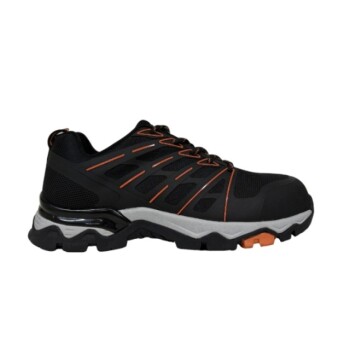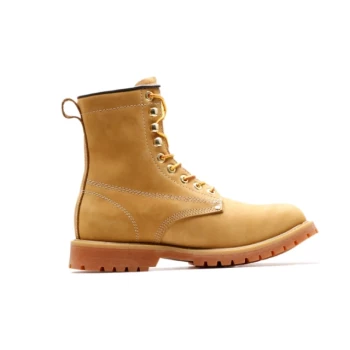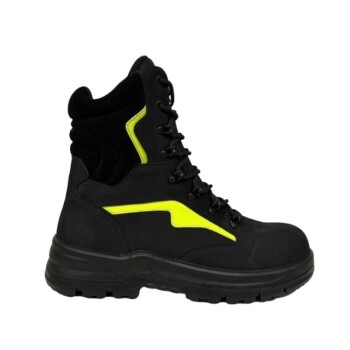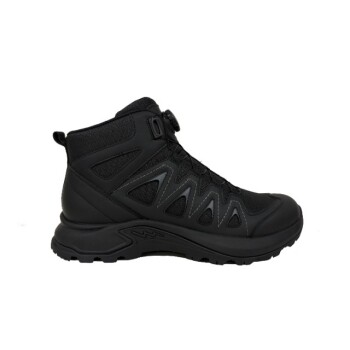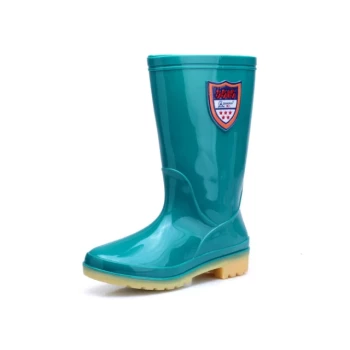When choosing the fit of a pull-on work boot, you must prioritize a snug fit across the instep and minimal movement in the heel. Unlike lace-up boots, pull-ons offer no adjustability, so the initial fit must be precise to ensure both long-term comfort and functional safety on the job.
The central challenge of fitting a pull-on boot is its lack of laces. This means your primary goal is to find a boot that provides a firm "handshake" over your instep, which is what locks your foot in place and prevents excessive, dangerous heel slip.
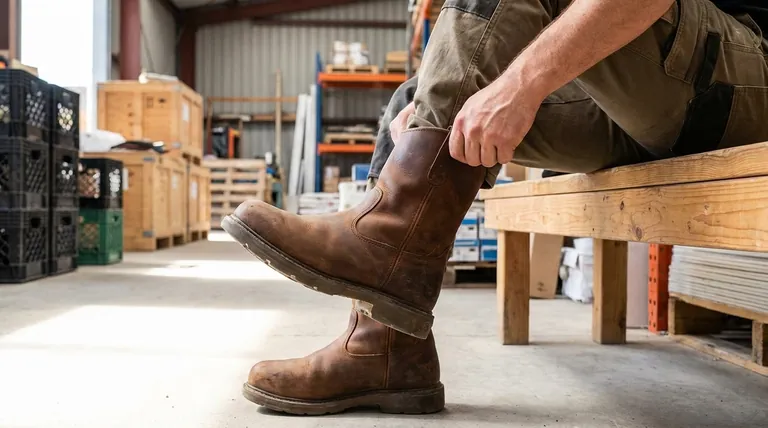
The Anatomy of a Perfect Pull-On Fit
Because you cannot tighten or loosen a pull-on boot, you must evaluate three distinct areas of the fit before making a purchase. The initial feel is a direct indicator of its long-term performance.
Securing the Heel
The most common point of failure in a pull-on boot is excessive heel slip. Your heel will lift slightly as you walk, which is normal for a new boot.
A small amount of slip (about a quarter-inch) is acceptable and will often decrease as the leather sole breaks in and flexes with your foot. However, if your heel moves up and down freely, the boot is too large.
The Instep "Handshake"
The fit across the top of your foot—the instep—is the single most critical factor. This is what holds your foot securely in the boot.
The pressure here should feel like a firm, snug handshake. It should not be painful or cut off circulation, but it must be tight enough to prevent your foot from sliding forward.
Sizing for Length and Width
Your toes should have enough room to wiggle freely and should not touch the end of the boot. Ensure the boot is wide enough that the sides of your foot are not painfully compressed.
Remember that work boot sizing can differ from your standard shoe size. It is essential to try them on, ideally with the thick work socks you wear daily.
Why a Precise Fit is Non-Negotiable
A poor fit in a pull-on boot isn't just an inconvenience; it's a direct threat to your comfort and safety throughout the workday.
The Lack of Adjustability
The convenience of a pull-on boot is also its greatest weakness. You cannot compensate for a slightly large size by tightening the laces. The fit you feel in the store is the loosest it will ever be.
Comfort as a Safety Feature
Long hours on your feet demand comfortable footwear. An improperly fitted boot can cause blisters, aches, and fatigue.
This discomfort is more than just an annoyance; it becomes a distraction that can lead to mistakes and accidents in a hazardous work environment.
Functionality for Your Environment
A boot that fits poorly cannot provide adequate support or stability. A loose boot can increase the risk of an ankle roll on uneven surfaces and is a potential tripping hazard.
The boot's safety features, such as a protective toe and electrical hazard rating, are only effective if the boot is properly secured to your foot.
Common Pitfalls to Avoid
Choosing the right fit often means understanding what to expect during the try-on process and avoiding common misconceptions.
Mistaking "Tough to Put On" for a Bad Fit
A brand-new pull-on boot with a proper instep fit should be somewhat difficult to put on. You may even need a shoehorn at first.
This initial resistance is often a sign that the instep is correctly sized to hold your foot. If the boot slides on with zero effort, it is likely too big.
Ignoring the Break-in Period
Quality leather boots will stretch and mold to your foot over time. However, a break-in period will not fix a boot that is fundamentally the wrong size.
The boot should be snug but not painful from the start. Never buy a boot that is too tight with the expectation that it will stretch to a comfortable size.
Forgetting Your Work Socks
The thickness of your socks can dramatically alter the fit of a boot. Always try on prospective boots while wearing the exact type of socks you use for work.
This simple step ensures your evaluation is based on real-world conditions, preventing you from buying a boot that becomes too tight once you wear your thicker work socks.
Making the Right Choice for Your Work
Your specific job should guide which element of the fit you prioritize most.
- If your primary focus is stability on uneven terrain: Prioritize a very snug instep and minimal heel lift to prevent ankle rolls and ensure control.
- If your primary focus is all-day comfort on hard, flat surfaces: Prioritize correct length and width, ensuring your toes can splay and your foot has room to swell slightly.
- If your primary focus is convenience for frequent on-and-off: Find the perfect balance where the instep is secure enough for safety but allows for relatively easy entry and exit.
Ultimately, selecting the right pull-on work boot is a commitment to your daily safety and comfort.
Summary Table:
| Key Fit Area | What to Look For | Why It Matters |
|---|---|---|
| Heel | Minimal slip (approx. 1/4 inch) | Prevents blisters and ensures stability |
| Instep | Firm, snug "handshake" feel | Locks foot in place, compensates for lack of laces |
| Toe Box | Room to wiggle toes, no contact with end | Ensures comfort and accommodates natural foot swelling |
Get the Perfect Fit for Your Team with 3515
As a large-scale manufacturer, 3515 produces a comprehensive range of durable pull-on work boots designed for the demands of distributors, brand owners, and bulk clients. Our expertise ensures every pair offers the precise fit, stability, and comfort your workforce needs for maximum safety and productivity.
Contact us today to discuss your bulk footwear requirements and discover how 3515 can be your trusted manufacturing partner.
Visual Guide
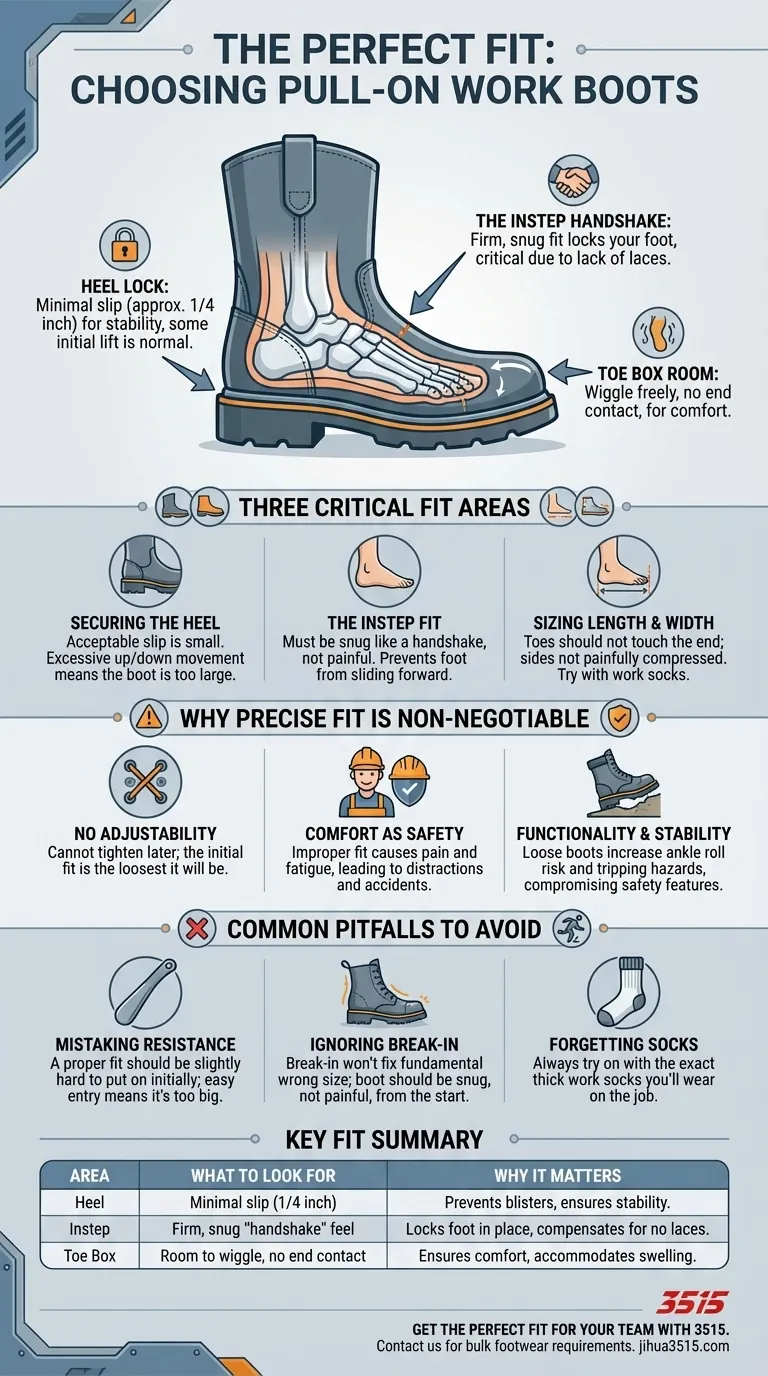
Related Products
- Safety Footwear Wholesale Manufacturer for Custom OEM/ODM Production
- Wholesale Safety Footwear Manufacturer for Bulk & Custom OEM Orders
- Premium High-Cut Waterproof Safety Boots Manufacturing & Wholesale Solutions
- Premium KPU Injection Athletic Style Safety Shoes
- Wholesale Anti-Smash & Puncture-Proof Safety Shoes Custom Manufacturing for Brands
People Also Ask
- How do safety shoes contribute to cost savings for companies? A Strategic Investment in Risk and Cost Management
- What are OSHA approved shoes? Understanding the Correct Standards for Workplace Safety
- What do heavy duty boots do? Protect Your Feet in Demanding Work Environments
- Is safety-toe as good as steel toe? Choose the Right Protection for Your Job
- Do snake bite boots work? Your Ultimate Guide to Effective Snake Bite Protection



